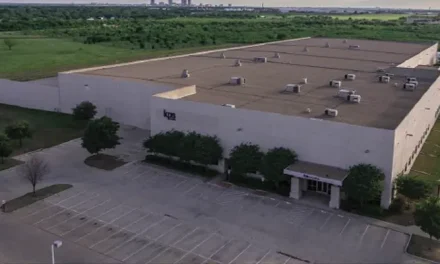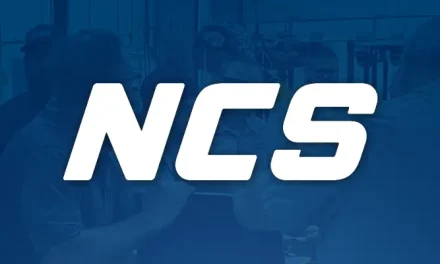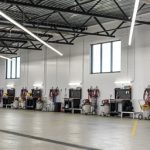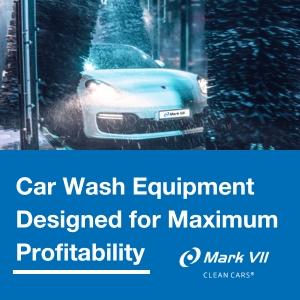
Understanding the Importance of Retail-Fueling Installers and Service Providers

By Ed Kammerer
In our final “Forecourt Insight” article of 2024 (where has the time gone?), we’ll take a return trip to our fictional retail-fueling business in Caronport, Saskatchewan, just west of Moose Jaw. As you’ll remember, our last article focused on the importance of building a strong distributor partnership. As we said, a good, experienced distributor can not only share tribal knowledge about the market but also offer a number of other benefits to the business, including having a ready supply of equipment on hand should the operator need it.
So, now that you’ve identified your distributor – one that is hopefully an OPW Retail Fueling supplier partner – and placed an order for the systems and equipment that will outfit your retail-fueling business, what’s next?
Time Is Money
The answer is the same whether you’re knocking down and rebuilding a site, known as a KDR, or building a brand new site on a shiny new corner that is new to the industry, or NTI, according to the accepted vernacular. You must contract with an installer that will be responsible for placing the components in your new or rebuilt site.
The first consideration here is also the most obvious: Find one with a proven reputation of getting the job done. The best petroleum-equipment installers are those that are true pump-and-tank contractors and not someone that only dabbles in the industry while focusing on other types of projects. In other words, not everyone with a backhoe can build a station, so you don’t want an installer that is doing guesswork. The result of that can be a site, most notably, with leaks in the dispensing or containment systems and where water can get in, gasoline or diesel can get out, which opens the door to a whole slew of potentially negative consequences.
Concurrently, the installer should be certified by the manufacturer and supplier of the systems and equipment that will be installed, along with possessing a staff that is up-to-date and in compliance with all provincial training certificates. Proximity to the building site is also important because some of the equipment may be shipped to the installer, which creates ready access to the stocking depot, as well as replacement parts should anything break or go missing during construction.
The second major consideration harkens back to an old aphorism attributed to Benjamin Franklin: “Time is money.” Whether you’re building new or remodeling an existing site, there’s no getting around the fact that it can take anywhere from six weeks to six months to get the business operational. If it’s an NTI build in a fresh location, the level of urgency to get the site up and running is a little less since the “Coming Soon: Caronport Gas-N-Go” sign positioned at the corner of the lot can even help build excitement in the anticipation that a new business will soon be operating there.
However, if the site is being remodeled, every day that it is shuttered creates an opportunity for loyal customers to identify an acceptable alternative. Since human beings are creatures of habit, if a driver starts frequenting a new retail-fueling business while his typical one is shuttered, he or she may grow an affinity for the new place and not return to the old one after it reopens. Therefore, while there are undeniable hard costs associated with being closed while the remodeling takes place, an elongated construction window can lead to the incurrence of additional costs. So, quicker is better.
A final consideration is something that the people of Canada have no real control over: The weather. Sure, the summers are great, but you never know when that first debilitating cold snap or snow-and-ice storm will hit. Having the ability to get the installation completed within the nice-weather window is also a skill that good installers possess.
At Your Service
Once the site has been built or remodeled and the drivers are flowing in, the next crucial consideration arises: Identifying and partnering with a reputable service provider. Keep in mind that some installers also employ a service department so you may have a one-stop-shop option. Concerning overall fuel-site service and maintenance, as we’ve noted in these pages in the past, retail-fueling operators usually take one of two approaches to servicing and maintaining their sites: 1) proactive or 2) reactive, i.e., stay ahead of the service curve through preventative-maintenance schedules and regular service checkups or wait until a piece of equipment fails and then replace it.
We, of course, highly recommend option No.1, but how can you be “successfully proactive?” Again, gauging the experience and reputation of the service provider is paramount. Here the “time is money” mantra is again relevant. Simply put, retail-fueling sites that are subject to chronic “bag on nozzle” syndrome will not be successful. Therefore, the best service providers are those that can respond quickly, confidently assess the situation, and remedy it with a minimum amount of downtime.
It is also important to schedule regular service visits; relying on a driver to tell you that a fuel nozzle is leaking is a no-win game. For instance, if, while on a scheduled service call, the technician notices a leaking nozzle, he or she can test the other ones to make sure that they are operating properly or may be close to failure, at which point they can be replaced proactively. This can also be another safeguard against cold Canadian winters since no one wants to deal with a malfunctioning nozzle while standing outside in a blizzard with -40ºC wind chills.
As technology advances, the best service providers will also be in a position to take advantage of it. This includes using sophisticated online tools that enable call allocation through GPS. This allows service calls to be responded to faster, which can lead to a quicker resolution of the problem with minimal downtime incurred.

Conclusion
All drivers are just looking for a clean, efficient, reliable and safe fueling experience. Fuel-site operators, whether single-site owners or multi-site veterans, can help ensure the effectiveness of the fueling experience by turning to installers and service providers who are educated, skilled and masterful technicians with a true commitment to the retail-fueling industry. While it may appear simple to run a retail-fueling operation, you’re dealing with systems featuring many different types of hydraulics and electronics – and hazardous liquids – which means you need support from people who know the ins and outs of the business and can respond quickly and reliably to mitigate any challenges. That is the true importance of experienced and competent retail-fueling installers and service providers.
Ed Kammerer is the senior director, global product management for OPW, based in Cincinnati, OH, USA. He can be reached at ed.kammerer@opwglobal.com. For more information on OPW, go to opwglobal.com.



































